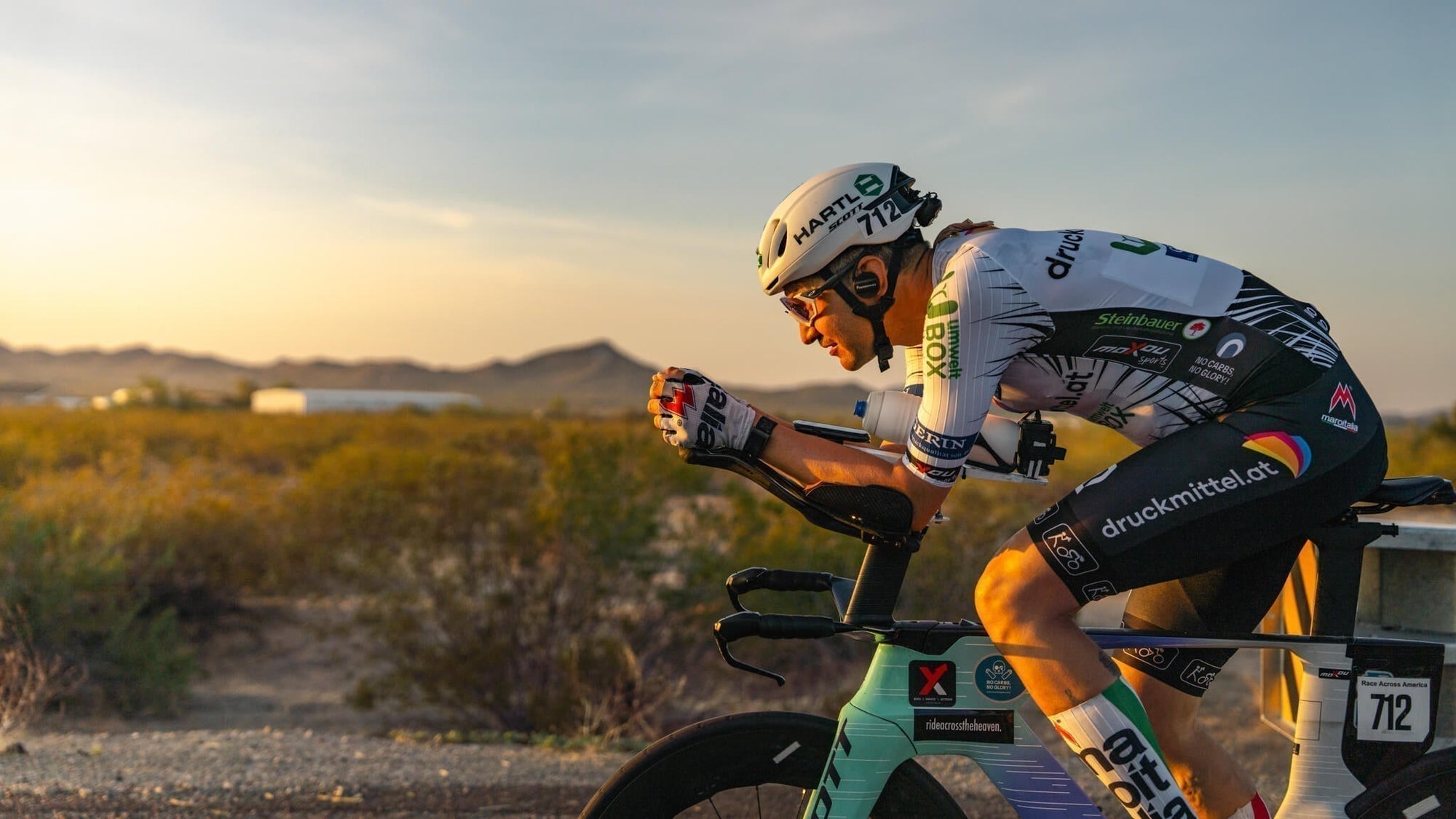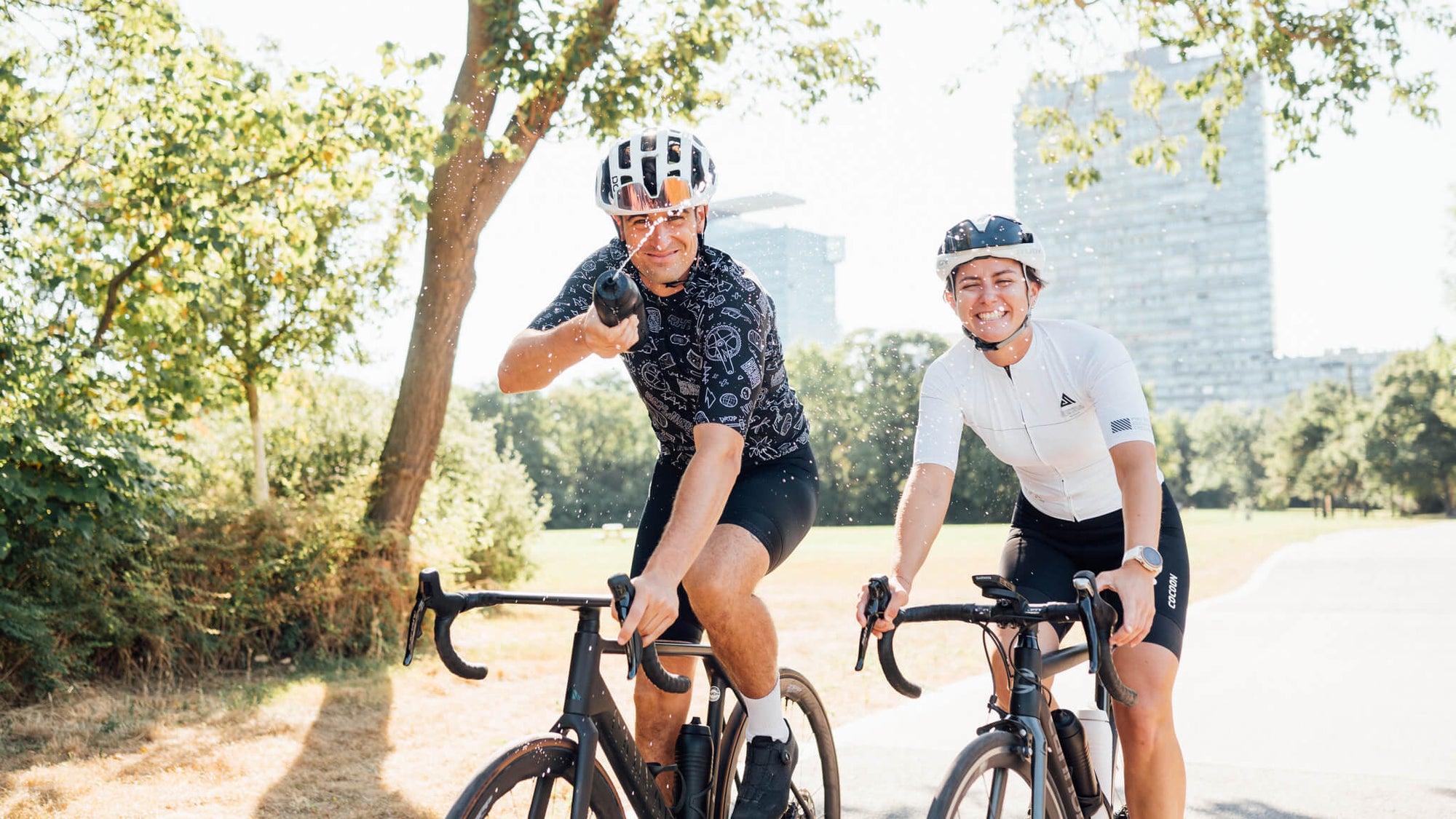Unterschätzte Gefahr: Chemikalien beim Sport & Radfahren
Unser Geruchs- und Geschmackssinn warnt uns in der Regel vor unerwünschten Stoffen.
Doch wie steht es um Fahrradflaschen aus Plastik?
Forschende der Universität Kopenhagen sind dieser Frage nachgegangen und haben untersucht, ob und wieviele Chemikalien sich aus den Sportflaschen in Getränke lösen.
In ihrer Studie füllten sie Wasser in neue, gängige Mehrweg-Sportflaschen und ließen es 24 Stunden stehen, bevor sie es auf chemische Rückstände analysierten. Das Ergebnis ist besorgniserregend: über 400 verschiedene chemische Verbindungen wurden nachgewiesen, die vorher nicht im Getränk waren.
Während BPA in vielen Flaschen inzwischen vermieden wird, sind es nun weitestgehend unerforschte Ersatzstoffe, die Besorgnis erregen. Die Studienleiter erklären, dass die Toxizität von rund 70 % dieser Substanzen noch nicht geklärt ist. Besonders problematisch sind sogenannte Photoinitiatoren, die als hormonaktiv und potenziell krebserregend gelten. Zusätzlich fanden sie Weichmacher, Antioxidantien und Trennmittel, die bei der Kunststoffherstellung verwendet werden. Viele dieser Stoffe können ungewollt durch Reaktionen mit anderen Chemikalien entstehen.
Hilft der Geschirrspüler?
Die Annahme, dass ein Spülgang die Flaschen effektiv reinigt, wird durch die Studie klar widerlegt. Nach einer Wäsche in der Maschine fanden die Forschenden noch ein Vielfaches an Substanzen, insgesamt 3500 verschiedene chemische Verbindungen – viele davon bisher unbekannt. Daher wird von den ExperteInnen ausdrücklich davon abgeraten, Sportflaschen im Geschirrspüler zu reinigen, da dies die Freisetzung schädlicher Stoffe begünstigen kann.
Selina Tisler, Postdoktorandin und Erstautorin der Studie am Fachbereich Pflanzen- und Umweltwissenschaften der Universität Kopenhagen, erläutert: „Nach dem Spülen verbleiben viele Chemikalien aus der Flasche selbst weiterhin im Wasser. Die giftigsten Substanzen, die wir identifiziert haben, traten sogar erst nach der Reinigung in der Maschine auf – weil das Waschen den Kunststoff angreift und das Auslösen der Stoffe begünstigt.“
Mikroplastik im Gehirn:
Neue Forschungsergebnisse von Matthew Campen und seinem Team an der University of New Mexico zeigen, dass Mikroplastik nicht nur in Organen wie Leber und Nieren, sondern auch in besonders hohen Konzentrationen im Gehirn nachgewiesen wurde. Bei allen 52 von ihnen untersuchten Leichen fanden sich Plastikpartikel, in manchen Fällen in Mengen, die dem Gewicht eines kleinen Plastiklöffels entsprechen. Dies könnte ebenso auf einen Zusammenhang zwischen Mikroplastik und der Entstehung von Demenz hindeuten.
Die im Gehirn nachgewiesenen Partikel waren meist kleiner als 0,2 Mikrometer und bestanden hauptsächlich aus Polyethylen – ein Material, das in vielen Alltagsgegenständen verwendet wird. Aufgrund ihrer geringen Größe können sie die Blut-Hirn-Schranke überwinden. Besorgniserregend ist zudem, dass die Menge an Mikroplastik in Gewebeproben aus dem Jahr 2024 deutlich höher war als in Proben aus dem Jahr 2016. Dies deutet darauf hin, dass sich Mikro- und Nanoplastik in der Umwelt rapide ausbreiten.
20 mal mehr Mikroplastik aus Plastikflaschen
Laut der Studie kann der Konsum von Wasser aus Plastikflaschen die Aufnahme von Mikroplastikpartikeln erheblich erhöhen – über 20-mal mehr als bei der Nutzung von Leitungswasser. Auch Glasflaschen enthalten laut einer Analyse von 21 Studien mehr Plastikpartikel als Leitungswasser, möglicherweise durch den Abfüllprozess.
Auch das Erhitzen von Speisen in Plastikbehältern – insbesondere in der Mikrowelle – setzt erhebliche Mengen an Mikroplastik und Nanoplastik frei. Selbst eine langfristige Lagerung bei Raumtemperatur oder im Kühlschrank kann dazu führen, dass Partikel aus dem Kunststoff in die Nahrung übergehen. Die Verwendung von wiederbefüllbaren Metallbehältern wird daher als effektive Maßnahme empfohlen, um die Plastikbelastung zu reduzieren.
Welche Alternativen gibt es?
„Wir achten so stark auf niedrige Pestizidwerte in unserem Trinkwasser, doch sobald wir es in eine Plastikflasche füllen, kommen hunderte oder sogar tausende Stoffe hinzu. Auch wenn wir noch nicht genau wissen, wie sich diese Chemikalien auf unsere Gesundheit auswirken, werde ich künftig lieber eine Glas- oder Metallflasche nutzen.“ – so Jan H. Christensen, Professor am Fachbereich Pflanzen- und Umweltwissenschaften der Universität Kopenhagen.
Doch im Sport- und Fahrradbereich sind Glas- und Metallflaschen oft unpraktisch. Sie sind schwerer, nicht quetschbar und bergen ein größeres Verletzungsrisiko bei Stürzen.
Eine innovative Lösung bietet das Startup KEEGO:
Ihre Flasche besteht aus mehreren Schichten, die Inneren bestehen dabei aus reinem, aber dennoch quetschbarem Titan. Dadurch vereint sie die Vorteile einer leichten, flexiblen Plastikflasche mit der Reinheit und Geschmacksneutralität einer Metallflasche – ganz ohne ungewollte Chemikalien.
Quellen:
-
Universität Kopenhagen: "Chemical leaching from reusable plastic bottles"
-
University of New Mexico: "Microplastics accumulation in human brain tissue"
-
Brain Medicine: "Human microplastic removal: what does the evidence tell us?"
-
Nature Medicine: "Bioaccumulation of microplastics in decedent human brains."
-
Science Advances: "Microplastics in the bloodstream can induce cerebral thrombosis by causing cell obstruction and lead to neurobehavioral abnormalities."
-
Environmental Science & Technology: "Human Consumption of Microplastics."
-
International Journal of Environmental Research and Public Health: "Occurrence of Microplastics in Tap and Bottled Water: Current Knowledge."
-
Environmental Science & Technology: "Plastic Teabags Release Billions of Microparticles and Nanoparticles into Tea."
-
Environmental Science & Technology: "Assessing the Release of Microplastics and Nanoplastics from Plastic Containers and Reusable Food Pouches: Implications for Human Health."


